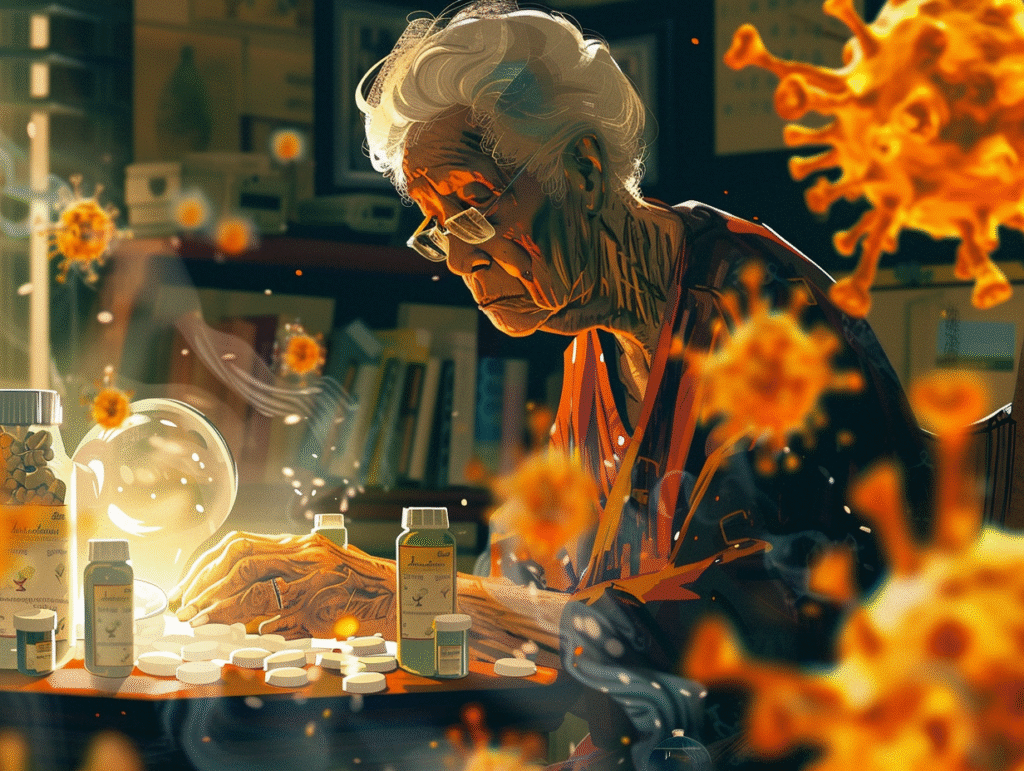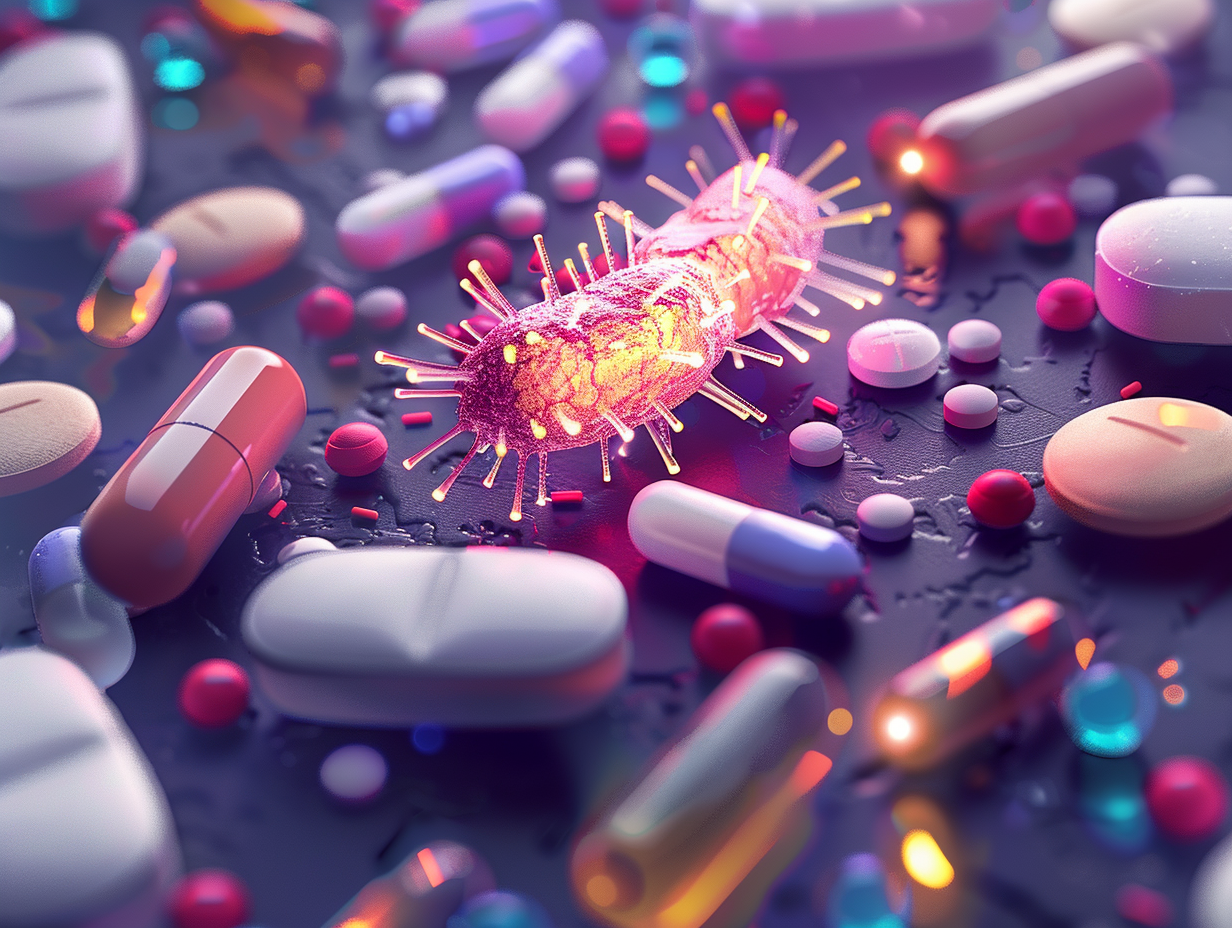Antimicrobial resistance (AMR), often referred to as the rise of superbugs, is one of the greatest health threats of our time. In 2019 alone, an estimated 4.95 million deaths were linked to infections resistant to treatment. Traditionally, the blame has fallen squarely on the overuse and misuse of antibiotics in medicine and agriculture. But groundbreaking research suggests another hidden culprit: non antibiotic medications (NAMs) the everyday drugs millions of people take for pain, heart conditions, or diabetess.
A new study published in npj Antimicrobials & Resistance reveals that some widely used medications, including ibuprofen and acetaminophen, can unintentionally encourage bacteria like Escherichia coli (E. coli) to develop resistance to powerful antibiotics such as ciprofloxacin. The findings raise serious questions about the unseen role of common drugs in fueling the global AMR crisis.
What Types of Medications Do Not Involve Antibiotics?
Target drugs that do not involve the use of antibiotics include pain killers (ibuprofen and acetaminophen), cholesterol lowering drugs (statins), diuretics medications (furosemide), and even some sleep medications. In the pharmaceutical industry, these drugs account for approximately 95% of the drugs prescribed globally.
Many elderly patients living in Residential Aged Care Facilities (RACFs) rely on numerous medications on a daily basis, which is termed polypharmacy. In these patients, there is a likelyhood on being prescribed both antibiotics and Non Antibiotic Medications (NAMs) which could contribute to the generation of drug resistance.
Research Topics Include the Interactions of Antibiotics on Widely used Non Antibiotic medications
The NAMs that tend to be most prevalent that were investigated in the study include:
Ibuprofen
Acetaminophen (paracetamol)
Diclofenac
Furosemide
Atorvastatin
Metformin
Tramadol
Temazepam
Pseudoephedrine
In relevant concentrations to the gut these drugs were investigated in conjunction with the use of ciprofloxacin. Out of the nine drugs studied, the following displayed the most striking outcomes:
The rates of mutation of E. coli and the ability of the bacteria to withstand the drug ciprofloxacin are determined significantly by the presence of acetaminophen and ibuprofen.
Diclofenac and furosemide were also determined to lower mutation rates, but to a much smaller extent.
It is astonishing to uncover that some members of tramadol and pseudoephedrine, under certain conditions, do not enhance mutation rates.
These mutations were often found in genes associated with bacterial systems that pump out antibiotics (which efflux pump protein systems), thus enabling them to counteract and withstand treatment, as revealed by whole genome sequencing.
Why This Matters: Beyond Antibiotic Overuse
When it was demonstrated that certain non antibiotic medications can also enhance antibiotic resistance, our perception of AMR was forever changed Antibiotic resistance was also demonstrated in patients who do not misuse antibiotics, simply by virtue of what medications are available by prescription.
Consider for example aged care facilities, which often have high ciprofloxacin usage for the treatment of urinary tract infections. The concomitant use of standard analgesics in these facilities may help to select for the emergence of extremely tetracycline resistant (ETR) strains of E. coli. Some mutations in this strain resist ciprofloxacin up to 64 times more than unexposed strains.

The Role of Polypharmacy
The aged population is more likely to engage in polypharmacy or the concurrent use of numerous medications. This is often unavoidable in the context of managing multiple co-morbidities. This study adds to the polypharmacy literature in that it raises the possibility of also having antibiotic resistant bacteria, especially from the use of multiple, non antibiotic medications.
The concern is not simply hypothetical. There is the possibility of resistant bacteria from a single individual becoming more prevalent in a particular facility, or spreading to the entire community and hospital, thus aggravating the global issue of antibiotic resistance. This is why there is an urgent call to change prescribing behavior, particularly for the combination of antibiotics with NAMs.
Environmental Impact: Drugs in Wastewater
Environmental contamination continues to go unchecked. The body does not metabolize many medications completely. Wastewater receives excreted antibiotics and non antibiotic medications (NAMs) through excretion. Along with antibiotics, non antibiotic medications (NAMs) enter excreted wastewater and become integrated with bacteria. The aftermath generates one more site for the proliferation of resistance genes to multiply, even in the non clinical territory.
Implications for Public Health
This information enhances the battle against superbugs. The focus is underlined about the fact that:
Drugs on the market can prompt resistance. Painkillers, like ibuprofen or acetaminophen, equally to antibiotics, can drive mutations in bacteria.
The more medications one takes, the greater the exposure to the risk of the person. Elders in aged caring facilities are especially easy targets for the concealed consequences of AMR.
Environmental concerns are important. Traces of medications found in wastewater are capable of increasing the global proportion of resistance.
There is some evidence to support that the current approach to chronic illnesses must be modified. Clinicians must pay attention to the associated concerns of AMR with the combined Antibiotic and Non Antibiotic Medications (NAM) use.
Conclusion
The focus of this study suggests that the some of the most glaring issues related to the appropriate and appropriate use of drugs in contemporary society must be severely and more deeply understood. The relationship between the aged society with the ever increasing complexity of prescribed therapy, and therefore the focus on overused and concurrent medications, must be highlighted.
Focusing on this unexplained driver of resistance informs scientists on more considerate formulation of prescriptions, more precise tracking, and ultimately stronger strategies against the looming superbug epidemic.
Reference
Chen H, Sapula S. A., Turnidge J., & Venter H. (2025). The effect of commonly used non-antibiotic medications on antimicrobial resistance development in Escherichia coli. npj Antimicrobials & Resistance. https://doi.org/10.1038/s44259-025-00144-w

